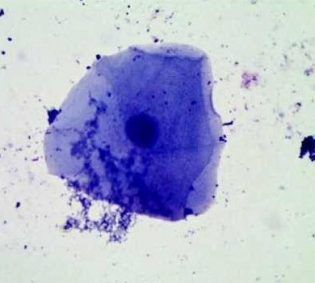Mucins and Health

Mucins are key components of mucus, which is found to provide critical protection on wet epithelial surfaces in the body. Mucins are found in the gastrointestinal tract, female genital tract, and respiratory tract, as well as in the oral cavity.
When you lose mucin production, this can lead to increased disease incidence. In the oral cavity, reduction in saliva production has been linked to the increased incidence of candidiasis and dental caries. Recent research suggests that this is directly linked to the reduced presence of salivary mucins.
Oral Mucins
There are many mucins in saliva, described by the letters MUC and a number (e.g. MUC5B, MUC7, MUC19, MUC1, and MUC4).
The key mucins are MUC5B and MUC7

MUC5B – main gel-forming mucin in the mouth, secreted by mucous cells in the submandibular, sublingual, palatine, and labial salivary glands.
MUC7 – is a secreted mucin but lacks gel-forming properties. It is produced mainly by mucous cells of submandibular and sublingual glands
How Mucins Protect your Oral Cavity
Attraction: Mucins interact with antibacterial salivary proteins, drawing them to the mucous membrane surfaces, thereby increasing the duration of antibacterial effect. They may also increase the potency of these proteins. MUC5B and MUC7 have been shown to bind salivary IgA.
Microbial sequestration: Studies have shown that mucins bind bacteria and induce their attachment to oral surfaces. The protection effect of this attachment may manifest itself by :a) clustering suspended bacteria in saliva, thereby facilitating their removal from the oral cavity b) specific interactions with bacteria leading to their dispersal
Potential ways salivary mucins could protect the oral cavity from microbial colonization. (a) Salivary mucins could agglutinate microbes, which would facilitate their removal during swallowing. (b) Salivary mucins could also disperse bacteria through glycan-specific interactions.Microbial attenuation: Binding between the microbes and mucins has been shown to reduce their pathogenic activity. Repulsion of the bacteria from oral surfaces may also be another mechanism, but this is still under investigation.
Salivary Mucins Prevent Disease
Scientists are still working on the exact mechanisms through which protection is effected in the case of each of the salivary mucins, however what is clear is that mucins play a role in disease prevention.
HIV/AIDS: Salivary mucins are able to limit viral infection of T cells in the case of HIV/AIDS. Early studies show that whole saliva and, more specifically, saliva from the submandibular and sublingual glands inhibit HIV-1 infection
Candidiasis: Salivary mucins have been found to attenuate fungal infection in candidiasis. MUC5B has been found to repress C. albicans infection by hyphal formation (associated with host cell invasion).
Dental Caries: MUC5B and MUC7 have been shown to bind oral microbes, facilitating their killing and clearance. A study has shown that study shows that elderly patients with low MUC7 levels demonstrated increased S. mutans concentration in their saliva compared with those with higher MUC7 levels.
Final Thoughts
More research is needed to improve our understanding of the interaction of salivary mucins with oral microbes and how the resulting protection is mediated. It is now possible to predict a future in which we could use extracted salivary mucins or bio-engineered “mimetics” as therapeutic tools to prevent or treat diseases.













I am very amazed by the information of this blog and I am glad I had a look over the blog. thank you so much for sharing such great information.
Thank you for the comment. I´m glad you liked it.